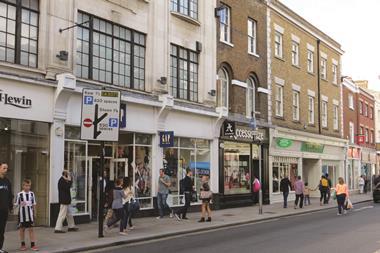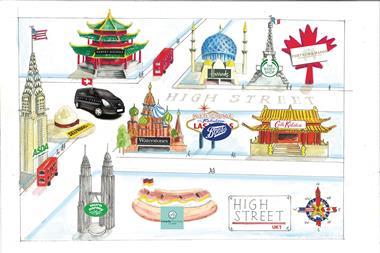The plight of our traditional shopping area must remain a priority for this government and the £1 billion package of support for the high street launched last December is to be welcomed.
The plight of our traditional shopping areas must remain a priority for this Government and the £1 billion package of support for the high street launched last December is to be welcomed.
Business rate discounts, capping the Retail Price Index and tackling aggressive parking policies will make life easier for retailers but it does not address the true business rates problem, which is of course the rate revaluation deferral to 2017.
Recent research we have undertaken highlights that 40% of UK retail locations are losing out as a result of this.
Maintaining the economic vitality of our high streets depends on flexibility, design and use and this is a change that the Government can help with through the relaxation of planning laws. A healthy high street should reflect a combination of current UK business strengths and there is no reason why telecommunication, technology, media and even light manufacturing shouldn’t combine with financial services, residential and retail to produce vibrant and relevant areas.
It is to be welcomed that the new High Street Minister, Penny Mordaunt, has unveiled plans to relax planning rules so that retailers can construct ‘click and collect’ facilities.
This is the kind of flexibility of planning and design that that will help to future- proof retail locations and enable retailers to offer the consumer the seamless multi-channel service that they demand. Shopping will always exist in the UK, both as a necessity and a past time, but we have to accept that consumer habits and technological innovation means that the physical space has to adapt.
Mordaunt has said that her main focus will be ensuring local authorities are optimising the new measures the Government has put in place to help boost high streets through planning, parking and localised business rates powers.
However, it would be more interesting and beneficial for her to devote time to focusing on planning relaxation laws for high streets and in town centres. Greater flexibility for alternative uses including community services, offices and even light industrial is the way forward and this experiment has already worked in areas of New York where “zoning” has been relaxed and new mixed use quarters are developing.
Our old industries were incongruous with retailing, but our new telecommunication, media and technology industries could work well as part of a residential and retail mix - look at London’s Soho. The emergence of 3D printing may also allow some light manufacturing to join a healthy mix.
One thing is certain: the retail landscape is changing forever and the Government needs to facilitate and enable flexibility to ensure that our high streets can move with the times and provide a different dimension to the online retail offering.
- Tim Vallance, Lead Director in JLL’s UK Retail and Leisure team


























1 Reader's comment